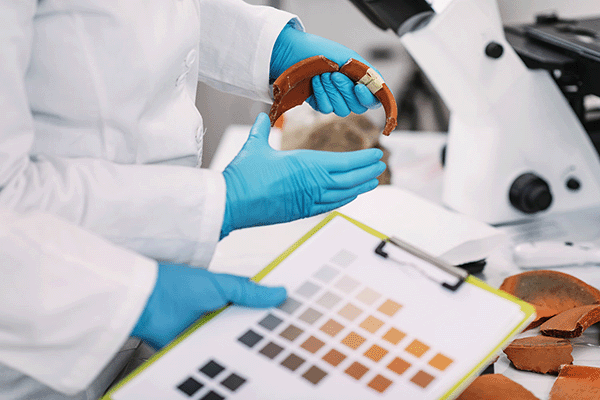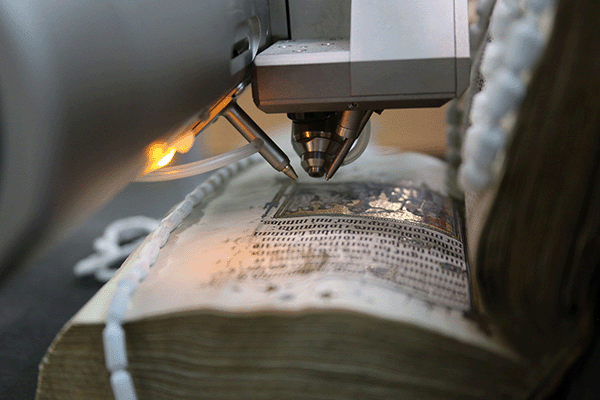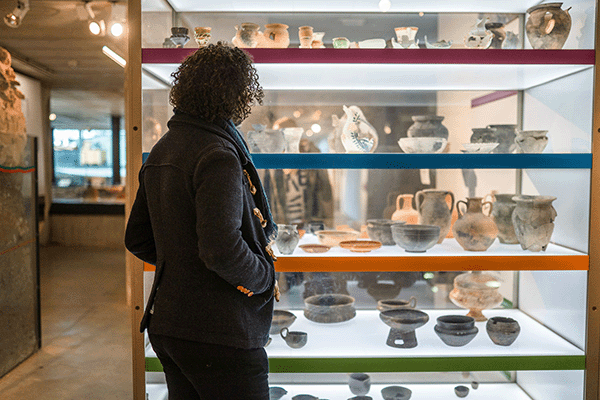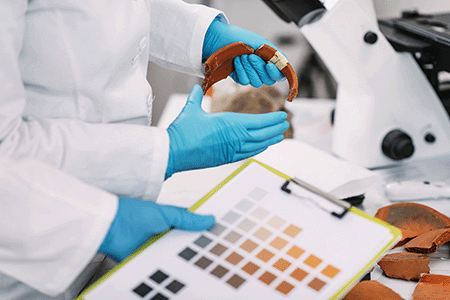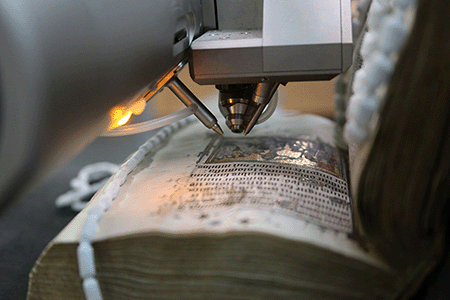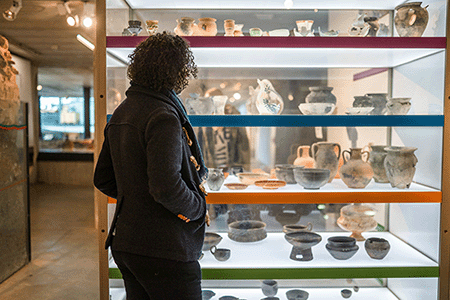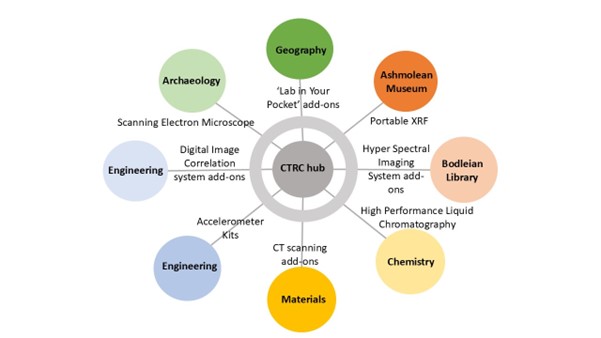Cover image courtesy of Professor Heather Viles
The RICHeS team recently had the pleasure of visiting the University of Oxford, to meet with the team leading the Oxford Collaboration in Heritage Science Research and Engagement (OCHRE) project. Funded through the RICHeS infrastructure programme, OCHRE is led by Professor Heather Viles and is designed to enhance Oxford’s existing world-class capabilities in heritage and conservation science. At its core, OCHRE aims to establish a sustainable, interdisciplinary heritage science hub centred around the newly commissioned Collections Teaching and Research Centre (CTRC). By integrating scientific expertise, museum collections and state-of-the-art laboratory facilities, the initiative will enable more efficient coordination and access to research infrastructure across the university and the UK.
Interdisciplinary laboratories supporting conservation and heritage science
As part of the visit, the RICHeS team toured several key laboratories across the OCHRE initiative, showcasing the interdisciplinary nature of heritage science. The project brings together expertise from geography, archaeology, chemistry, materials science, engineering and conservation to form a collaborative ecosystem of research.
The School of Archaeology houses wet laboratory facilities and advanced imaging technologies, enabling the preparation and microscopic analysis of archaeological and geological samples. These tools are vital for understanding material origins, degradation processes and historical environments. Archaeology also houses the Oxford Radiocarbon Accelerator Unit, which is funded by the National Environmental Isotope Facility (NEIF) and provides high-precision radiocarbon dating. This allows researchers to uncover timelines that underpin historical narratives and heritage contexts.
The Mass Spectrometry Facility at the Chemistry Research Laboratory has advanced instrumentation for the identification of a range of molecules, including proteins, in different types of samples. These techniques are increasingly critical for molecular-level investigations in heritage science, from identifying materials and degradation compounds to analysing biological residues and modern contaminants on artefacts.
Together, these spaces embody the vision of RICHeS to support cutting-edge research across disciplines, helping the UK maintain a leadership role in global heritage science.
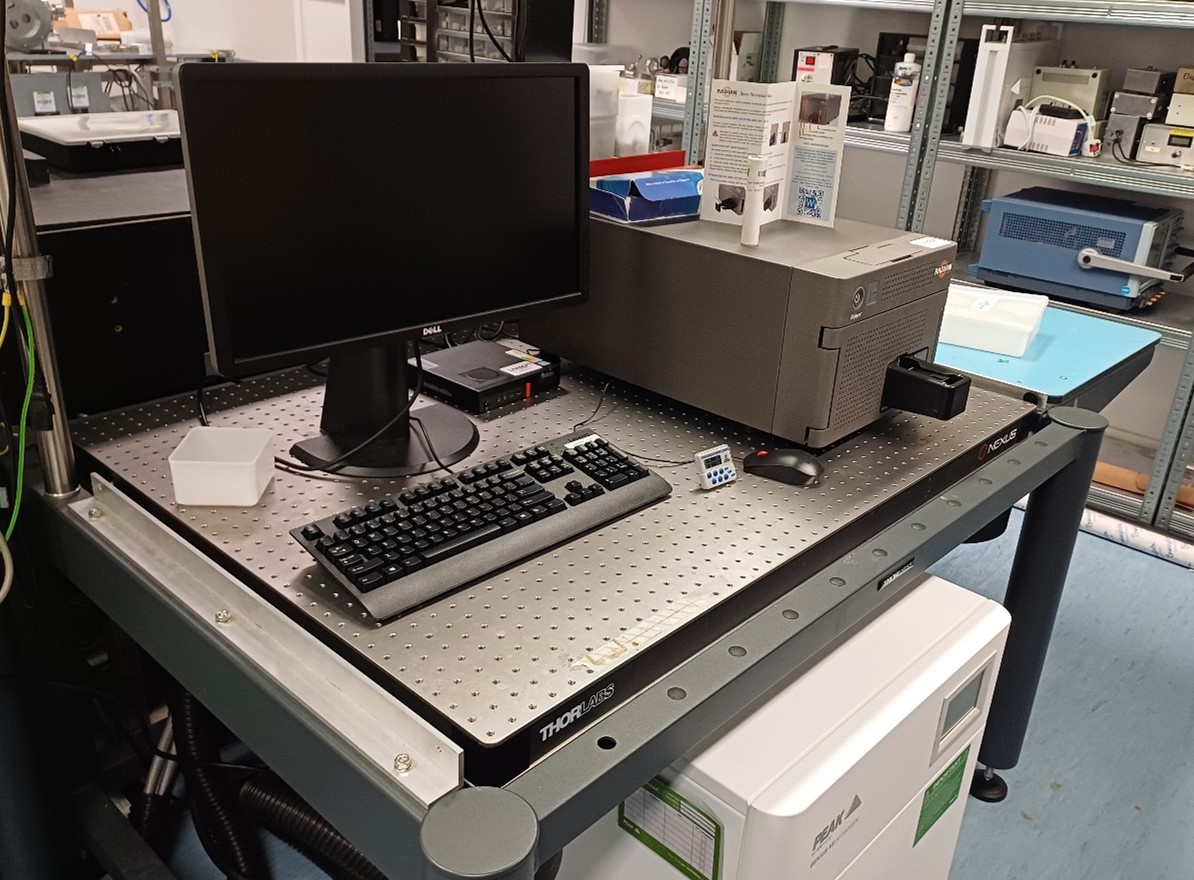
‘Lab in your backpack’: Portable science in the field
One of the most exciting demonstrations during the visit was the “Lab in Your Backpack” concept, an evolution of the School of Geography and the Environment’s “Lab in Your Pocket” idea. This initiative showcases how portable scientific equipment can bring analytical capability into the field, empowering researchers, conservators and curators to collect meaningful data directly at heritage sites and in collection stores. The toolkit includes:
- Kestrel mini weather stations for real-time environmental monitoring
- Portable microscopes for high-resolution, on-site inspections
- An infrared camera for thermal imaging, helping assess structural and material conditions
- Humidity and temperature buttons, small and discreet sensors that can be placed within display cases to track moisture levels. Crucial for protecting organic materials like wood, leather, or parchment from mould, warping and or shrinkage
This initiative exemplifies the OCHRE mission of making heritage science more accessible, flexible and field-ready, fostering greater collaboration across disciplines and institutions.
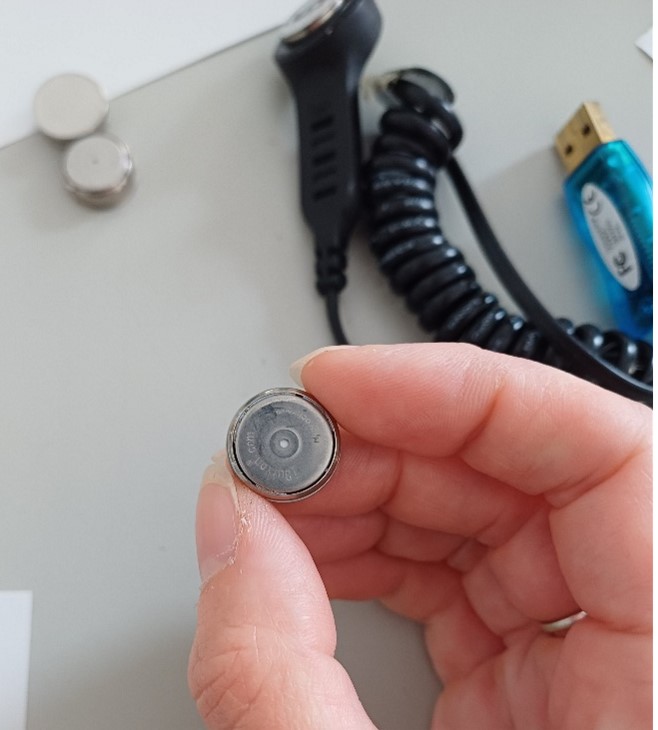
A shared vision for collaboration and impact
The OCHRE initiative connects eight laboratories across departments, alongside Oxford’s major collections, the Bodleian Libraries, the Ashmolean Museum and the Pitt Rivers Museum. Collaboration is at the heart of the programme, not only within the university but also through external partnerships with leading heritage institutions such as the British Museum, Historic Royal Palaces, and the National Trust. The RICHeS team look forward to seeing these grow further through the RICHeS distributed infrastructure.
Professor Heather Viles shares:
“It was great to be able to show the RICHeS team some of the OCHRE facilities and get their feedback. We look forward to the next visit when we can introduce them to the rest of the team and the other contributing labs“

